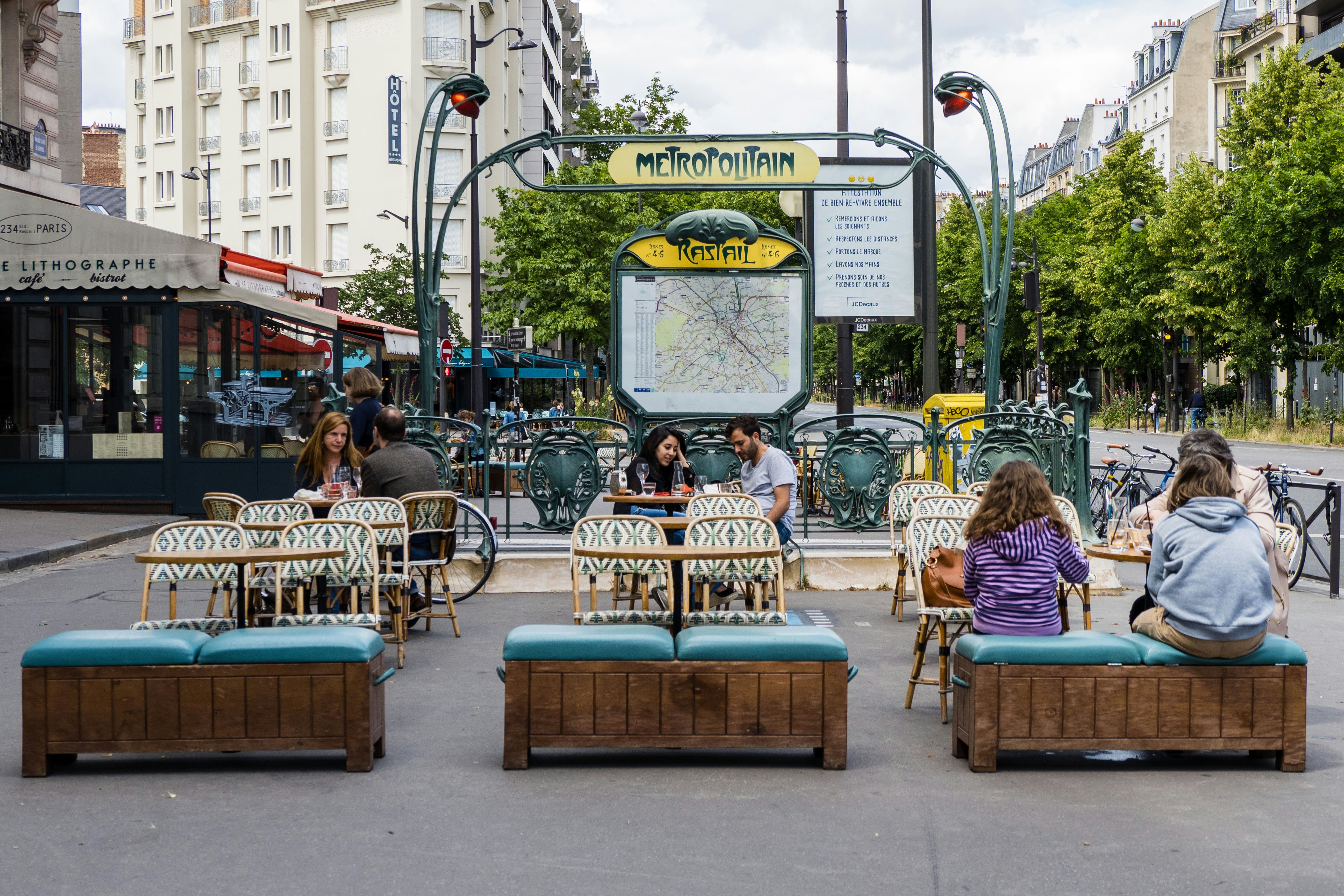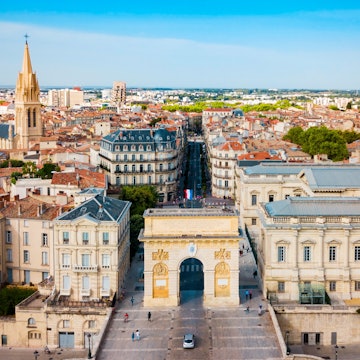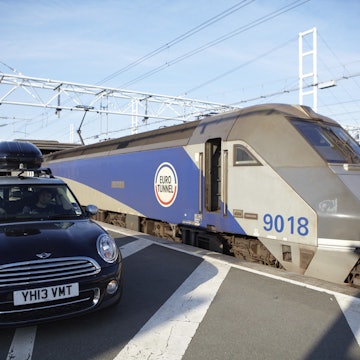

A waiter serves customers at a terrace of a restaurant in Paris as cafes and restaurants are allowed to serve customers inside, as well as on terraces. © Martin BUREAU/AFP via Getty Images
With its world-class art and architecture, seductive cafe life, village-square markets and unwaveringly romantic capital, France has enticed travellers since time immemorial. As the country reopens its borders, summer holidays in la belle France are back on – but with some notable differences.
The reopening of French borders on 15 June to travelers arriving from the EU, UK and Schengen zones hails a massive reboot for French tourism. As the world’s most visited destination, France welcomed 89.4 million visitors in 2019 and had been hoping to hit 100 million in 2020. Its reciprocal 14-day quarantine period applicable to arrivals from Spain (until 21 June) and from the UK (no confirmed end date yet) is voluntary. Here are the new security measures put in place to ensure France is safe for travelers.

Masks: the new French style
Mask wear is a pretty much a prerequisite now for French travel – always have one on you. Face masks for adults and children from aged 11 are obligatory on public transport (including afloat Seine river boats in Paris), cable cars, in museums, on guided tours, inside restaurants and cafes, and in many shops. Before entering boutiques, check for signs in the window reading "port du masque obligatoire". Disposable surgical masks and washable cotton masks are widely available in pharmacies and supermarkets. To inject some French panache into your face wear, order online a floral hand-printed fabric mask by Parisian Indie-design house Jamini or stylish scarf from iconic Parisian label Sézane.

Rethinking how to eat out
Much to the relief of the food-obsessed French, cafes, creperies, patisseries, bistros and restaurants in France are now open. Tables seating a maximum of 10 people are socially distanced 1m apart and printed menus are replaced by scannable QR codes, chalkboards, bistro wall mirrors handwritten with the dishes of the day or a swift oral presentation from the waiter (top tip: brush up your French!). Masks are obligatory for all restaurant and bar personnel – and for customers too when being seated or moving around inside the restaurant. Drinking standing at the zinc bar or anywhere other than seated around a table is a no go. Contactless payment by card is encouraged.
Cafes and restaurants in Paris and Île de France reopened fully on 15 June after a fortnight of only serving food outside – on pavement terraces, car-free streets and star-lit rooftops. Al fresco is definitely the preferred French style of dining right now and post-lockdown Paris is packed with creative eating opportunities. Open-air food mall Beaupassage, with its honeypot of Michelin-starred chefs and inaugural sit-down terrace of celebrity pâtissier Pierre Hermé, is a favorite for sweet macarons. Behind the Louvre, the Instagram-hot terrace of historic Le Nemours remains the essence of Parisian romance. In the hipster 10e, an explosive mousse au chocolat and Paris-Brest pastry tempt on the buzzing terrace of new-gen brasserie Brasserie Bellanger. The sweeping terrace of Le Perchoir Porte de Versailles, opening in July on the world’s largest urban rooftop farm by the team behind Le Perchoir, promises to be summer 2020’s ultimate fashionista address.

Seeing France's major attractions
Museums and monuments are gradually reopening countrywide – wear a face mask and expect your hands to be doused with hand sanitizer upon entering. Advance ticket reservations with an allocated time slot guarantee reduced visitor capacity at busy sights like the Musée du Louvre (reservations from 15 June, gallery open from 6 July), Château de Versailles and Lyon’s Musée des Confluences. Only the first two floors of the Eiffel Tower (from 25 June) can be visited – for obvious reasons the stuffy lift to the top remains closed. Inside museums and open-air sites such as Mont St-Michel in northern France, visitors must follow a clearly signposted one-way circuit. Disneyland Paris will open on 15 July.

Visiting the mountains
Hopes are high for a busy summer season in the French Alps and Pyrenees as more travelers actively seek out remote, sustainable summer breaks amid soaring mountain peaks, scenic hiking trails, wild alpine lakes and cheesy pots of tangy Savoyard fondue. All hiking trails are open. Cable-car stations in Chamonix and elsewhere have been kitted out with thermal cameras to check passenger temperatures before boarding. Reduced capacity respects social distancing: on each ascent, Chamonix’s iconic Aiguille du Midi cable car whisks just 25 to 30 passengers instead of 67 up to a dazzling snow-encrusted 3842m.

Spending time on the coast
Since 2 June all beaches along France’s 5800km of coastline on the Med and Atlantic have reopened. Groups of up to 10 are allowed, 1m social distancing applies, and group sports (eg football on the sand) are banned. Disinfecting is rigorous – Cannes opened the summer season with two beach quads blasting oxygenated water along its entire 7.5km of coastline.
City mayors can set additional rules: in Marseille beaches are "plages dynamiques", which means Plage des Catalans, Plage du Prado and other mythical urban beaches are limited to strolling, jogging, wind-surfing and other individual sporting activities. Lounging on a towel on the sand or having a lazy picnic lunch incurs an on-the-spot €135 fine. Public beaches in Cannes are open "en mode statique" – meaning unlimited sunbathing goes – but distance between groups must be 2m. On the public sections of celebrity-studded Plage de Pampelonne near St-Tropez sunbathing is allowed with social distancing of 3m, while sun loungers at exclusive beach clubs like Le Club 55 are positioned the standard 1m apart.
Back in the capital, Paris Plages will fill Seine-side quays with beach fun – albeit social-distanced – from 18 July until end of August.
Staying the night
Hotels in France were never obliged to fully shut – during lockdown many hosted hospital staff or guests in self-isolation – but government estimates suggest 95% did. Many only plan to reopen in late June or early July. Hotel staff must be masked and respect social distancing of 1m in public areas. Reception desks sport a protective shield, magnetic keys have become single-use, and digital check-in/out is encouraged. One-way systems, rigorous cleaning and hand-sanitiser dispensers everywhere are other new norms. Waiter- or room-service will replace the traditional, free-for-all hotel breakfast buffet.
You might also like:
Virtual Vacation: France
Driving in the footsteps of Napoleon in the south of France
First-time France: where to go and what to do
















